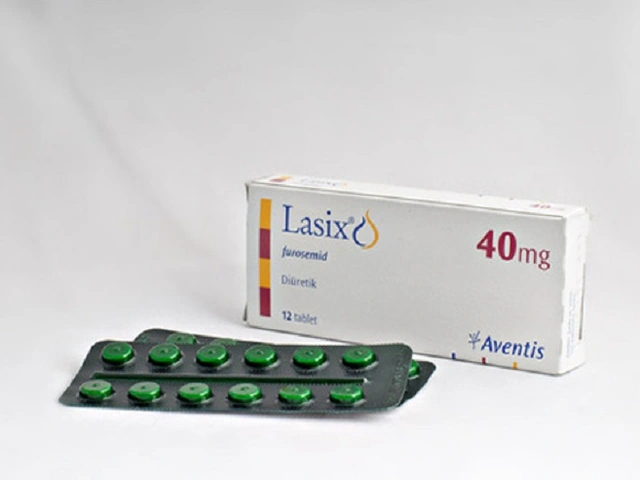Quick Takeaways
- Enzyme therapy replaces missing or low‑function enzymes to improve digestion and nutrient uptake.
- Common deficiencies include lactase, pancreatic lipase, and proteases.
- Therapies range from prescription pancreatic enzyme replacement to over‑the‑counter digestive blends.
- Choosing the right product depends on the underlying condition, dosage, and timing with meals.
- Potential side effects are mild but require monitoring, especially for people on anticoagulants.
When the body can’t produce enough enzymes, food literally slips through the digestive system without being broken down. The result? Bloating, nutrient gaps, and chronic fatigue. Enzyme therapy is a targeted approach that supplies the missing catalysts, letting the gut do its job again.
What Is Enzyme Deficiency?
Enzymes are proteins that speed up chemical reactions in the body. A deficiency occurs when production falls short of the amount needed for normal digestion. Enzyme deficiency can be congenital, such as genetic lactase deficiency, or acquired, like pancreatic insufficiency caused by chronic pancreatitis. The gut’s ability to break down carbohydrates, fats, and proteins dwindles, leading to malabsorption and downstream health issues.
How Enzyme Therapy Works
Therapeutic enzymes are ingested in a form that survives stomach acid and reaches the small intestine intact. Once there, they join the body’s own enzyme pool and resume the breakdown of macronutrients:
- Lactase splits lactose into glucose and galactose, easing lactose intolerance symptoms.
- Proteases cleave protein chains into amino acids, supporting muscle repair.
- Lipases emulsify fats, allowing for the absorption of essential fatty acids and fat‑soluble vitamins.
By filling the enzymatic gap, patients often notice reduced bloating, steadier energy levels, and better overall nutrient status.
Key Players in the Enzyme Ecosystem
Understanding the main entities helps you pick the right therapy:
- Lactose intolerance is a classic example of a specific enzyme deficiency (lactase) that can be managed with targeted supplements.
- Pancreatic enzyme replacement therapy (PERT) replaces the broad spectrum of enzymes the pancreas normally secretes, used for conditions like cystic fibrosis or chronic pancreatitis.
- Digestive enzyme supplements are over‑the‑counter blends that typically contain amylase, protease, and lipase.
- Gut microbiome interacts with enzymes, sometimes producing its own, which can complement or interfere with therapy.
- Pancreas is the primary organ that secretes digestive enzymes; damage to it often triggers the need for PERT.
- Nutrient absorption improves dramatically when enzymes are available to break down food into absorbable units.

Comparing the Main Types of Enzyme Therapy
| Therapy | Typical Use Cases | Prescription Required? | Enzyme Spectrum | Typical Dosage Form |
|---|---|---|---|---|
| Pancreatic Enzyme Replacement Therapy (PERT) | Pancreatic insufficiency, cystic fibrosis, chronic pancreatitis | Yes | Amylase, lipase, protease (high potency) | Capsules or enteric‑coated tablets |
| Targeted Over‑the‑Counter Supplements | Lactose intolerance, occasional indigestion | No | Single‑enzyme (e.g., lactase) or limited blends | Tablets, chewables, powders |
| Broad‑Spectrum Digestive Enzyme Blends | General digestive support, weight‑management programs | No | Amylase, protease, lipase, cellulase, bromelain | Capsules, softgels, liquid drops |
Choosing the Right Therapy - A Quick Checklist
- Identify the specific deficiency. Lab tests (e.g., fecal elastase) can confirm pancreatic insufficiency.
- Consider severity. Mild occasional symptoms may only need an OTC lactase tablet.
- Check for medication interactions. Enzyme capsules can affect the absorption of certain drugs, especially anticoagulants and antibiotics.
- Timing matters. Most enzymes work best when taken right before or during a meal.
- Evaluate cost and insurance coverage. PERT is often covered for chronic conditions, while OTC blends are out‑of‑pocket.
Benefits and Potential Side Effects
When matched correctly to a deficiency, enzyme therapy can restore normal digestion, improve body weight, and lessen fatigue. Reported benefits include:
- Reduced bloating and gas.
- Better absorption of vitamins A, D, E, K.
- Stabilized blood glucose spikes after meals.
Side effects are generally mild but worth monitoring:
- Occasional abdominal cramping if the dose is too high.
- Rare allergic reactions to enzyme sources (e.g., porcine‐derived PERT).
- Potential interference with drug bioavailability; always discuss with a pharmacist.
Practical Tips for Maximizing Effectiveness
- Start with the lowest effective dose and increase gradually.
- Take enzymes with the first bite of the meal; delayed intake reduces efficacy.
- Store capsules in a cool, dry place to preserve activity; many lose potency above 30°C.
- Keep a food‑symptom diary for two weeks; note any changes in bloating, stool frequency, or energy.
- Review your regimen annually with a gastroenterologist, especially if you develop new health conditions.

Frequently Asked Questions
Can I take enzyme supplements if I’m already on prescription PERT?
Usually you don’t need additional OTC enzymes because PERT already provides a full spectrum. Adding more can cause excess enzyme activity, leading to cramps. Always ask your doctor before mixing.
How long does it take to notice improvements?
Most people feel reduced bloating and better digestion within a few meals. Nutrient‑status changes, like improved vitamin levels, may take 4‑6 weeks of consistent use.
Are there vegetarian or vegan enzyme options?
Yes. Many OTC blends use fungal‑derived proteases and lipases, making them suitable for vegans. However, most prescription PERT is porcine‑based, so discuss alternatives if you avoid animal products.
Do enzymes expire?
Enzyme activity declines over time, especially if stored in heat or moisture. Check the expiration date and replace after two years, even if the bottle looks fine.
Can enzymes help with weight loss?
Indirectly. By improving nutrient breakdown, enzymes can stabilize blood sugar and reduce cravings. They’re not a magic pill; combine with diet and exercise for real results.







sachin shinde
28 September 2025 - 07:35 AM
While the article comprehensively outlines the mechanisms of enzyme therapy, it neglects to emphasize the nuanced pharmacokinetics that differentiate porcine-derived pancreatic extracts from fungal-derived blends. A careful reader will note the omission of enzyme stability data under varying gastric pH conditions. Moreover, the author could have benefitted from a deeper exploration of dose titration protocols, especially for patients with borderline deficiencies. The prose, though accessible, occasionally lapses into colloquialism unbecoming of a scientific discourse. Overall, the piece serves as a solid primer, albeit one that warrants a more rigorous analytical lens.
richard king
28 September 2025 - 18:41 PM
The gut, that silent alchemist, transforms humble morsels into the very vigor that fuels our aspirations. Enzyme therapy, in this grand theater, steps onto the stage as both protagonist and understudy, ready to fill the void left by our weary bodies. Imagine the cascade of flavors liberated when lactase finally receives its due applause, or the symphony of lipids dancing once the lipase reclaims its throne. It is a renaissance of digestion, a poetic resurgence of metabolic harmony. In the grand tapestry of health, these microscopic catalysts are the hidden threads binding the fabric of vitality.
Dalton Hackett
29 September 2025 - 05:48 AM
Enzyme supplementation, when approached with scientific diligence, can be a cornerstone of therapeutic nutrition, particularly for individuals whose endogenous production falters due to genetic or pathological causes. It is essential to begin with a comprehensive assessment, including fecal elastase measurements and lactose tolerance testing, to pinpoint the precise enzymatic deficit. Once the deficiency is corroborated, selecting a formulation that offers both stability in gastric acid and timely release in the duodenum becomes paramount. Many over‑the‑counter blends suffer from suboptimal enteric coating, resulting in premature degradation and diminished efficacy, a point often overlooked in casual discourse. Patient education must therefore stress the importance of synchronizing enzyme intake with the initial bites of a meal; delayed consumption markedly reduces substrate availability for catalysis. Dosage titration should follow a stepwise protocol, commencing with the lowest effective unit and escalating gradually to mitigate the risk of abdominal cramping, a side effect that can arise from excessive enzymatic activity. Monitoring for adverse reactions is critical, especially in those with a history of porcine protein sensitivity, given that most prescription pancreatic enzyme replacements are derived from porcine sources. Interactions with concomitant medications, notably anticoagulants, necessitate consultation with a pharmacist to preempt alterations in drug absorption profiles. Storage conditions also merit attention; enzymes are temperature‑sensitive and may lose activity if exposed to humidity or heat above 30 °C, underscoring the need for a cool, dry pantry environment. Recording symptom changes in a structured diary furnishes clinicians with objective data, facilitating iterative adjustments to the therapeutic regimen. Finally, annual reevaluation by a gastroenterologist is advisable to adapt the plan to evolving health status, such as the emergence of new comorbidities or changes in dietary patterns. In sum, when these meticulous practices are adhered to, enzyme therapy can restore digestive homeostasis, enhance nutrient assimilation, and ultimately improve quality of life for those afflicted by enzymatic insufficiencies.
William Lawrence
29 September 2025 - 16:55 PM
Sure, because taking pills is the same as fixing a broken engine.
Grace Shaw
30 September 2025 - 04:01 AM
It is my considered opinion that the author, whilst presenting a commendably thorough overview, could have afforded greater emphasis to the longitudinal outcomes associated with sustained enzyme therapy. Empirical investigations have demonstrated that consistent utilization over periods extending beyond six months often yields measurable improvements not only in gastrointestinal symptomatology but also in systemic markers such as serum vitamin D concentrations and glycaemic stability. Additionally, the discourse would have benefitted from an explicit delineation of the differential risk profiles inherent to porcine versus fungal-derived preparations, particularly in relation to immunogenic potential. A nuanced appreciation of these variables is indispensable for clinicians endeavoring to tailor interventions to the idiosyncratic physiologies of their patients. In light of these considerations, I advocate for the incorporation of a decision‑making algorithm within future expositions to aid practitioners in navigating the complex therapeutic landscape.
Lila Tyas
30 September 2025 - 15:08 PM
Hey everyone, just wanted to shout out how awesome it feels to finally get that bloat under control! 🎉 If you’re thinking about trying enzymes, start low and watch how your body reacts – it’s a game changer. Stay positive and keep powering through your health journey!
Julia Phillips
1 October 2025 - 02:15 AM
Reading through this brings back memories of my own struggle with lactose intolerance, a condition that once dictated my coffee choices and social outings. The revelation that a simple lactase tablet could liberate me from the dreaded cramp was nothing short of transformative. It’s heartening to see science demystify these everyday battles, offering us the tools to reclaim our culinary freedoms. May we continue to share our stories, for they illuminate the paths others may follow.
Richa Punyani
1 October 2025 - 13:21 PM
Indeed, the journey toward digestive harmony is both personal and universal. It is encouraging to witness how accessible enzyme supplements have become, especially those derived from fungal sources catering to vegan preferences. As we embrace these advancements, let us also champion the importance of regular monitoring and professional guidance, ensuring that each individual's regimen remains both safe and effective. Together, we can foster a community wherein informed choices lead to sustained well‑being.
Bhupendra Darji
2 October 2025 - 00:28 AM
I totally agree with the points raised above; sharing personal experiences really helps everyone make better decisions about enzyme use.
Robert Keter
2 October 2025 - 11:35 AM
From a clinical standpoint, the integration of enzyme therapy into a comprehensive management plan for pancreatic insufficiency cannot be overstated. The synergistic effect achieved when combining properly timed enzyme supplementation with dietary modifications, such as the inclusion of medium‑chain triglycerides, often yields superior outcomes in nutrient absorption. Moreover, patient adherence is markedly improved when the sensory profile of the supplement – be it capsule, chewable, or liquid – aligns with personal preferences, thereby reducing the psychological barrier to consistent use. In practice, a multidisciplinary approach involving gastroenterologists, dietitians, and pharmacists ensures that dosing regimens are optimized, potential drug‑enzyme interactions are mitigated, and long‑term monitoring protocols are instituted. Ultimately, such a holistic strategy not only ameliorates symptomatic distress but also fortifies overall metabolic health, underscoring the pivotal role of enzyme therapy in contemporary digestive medicine.